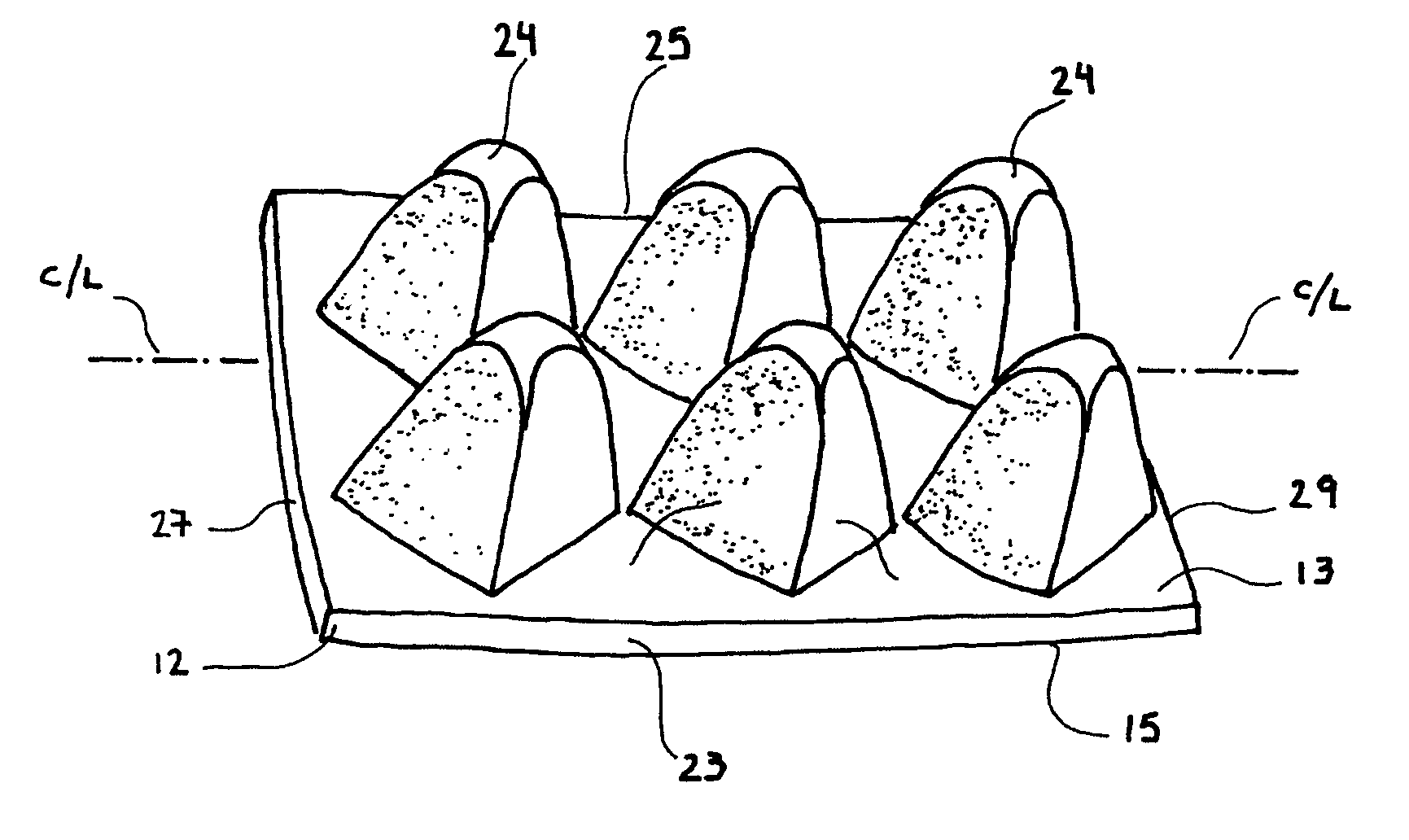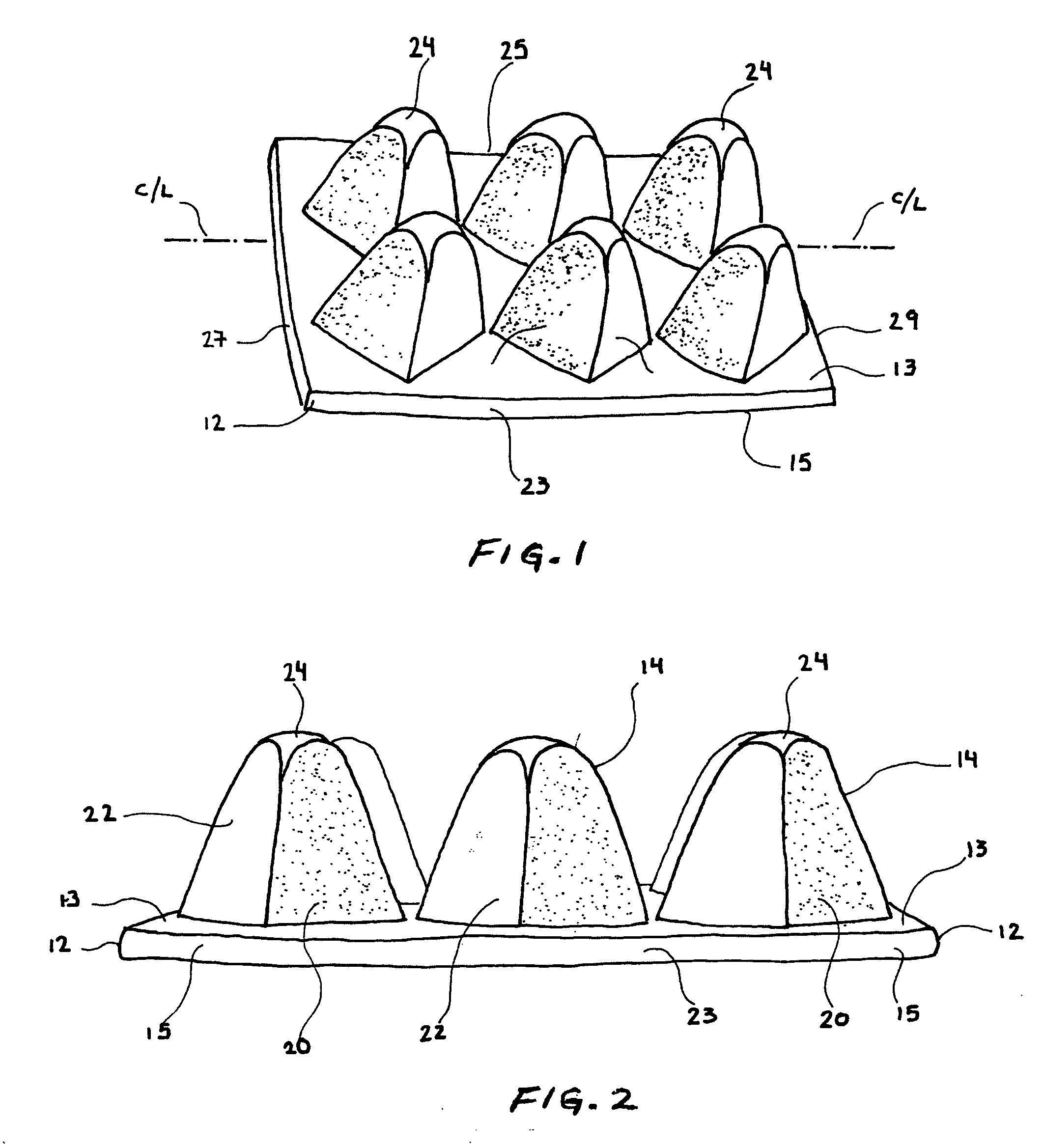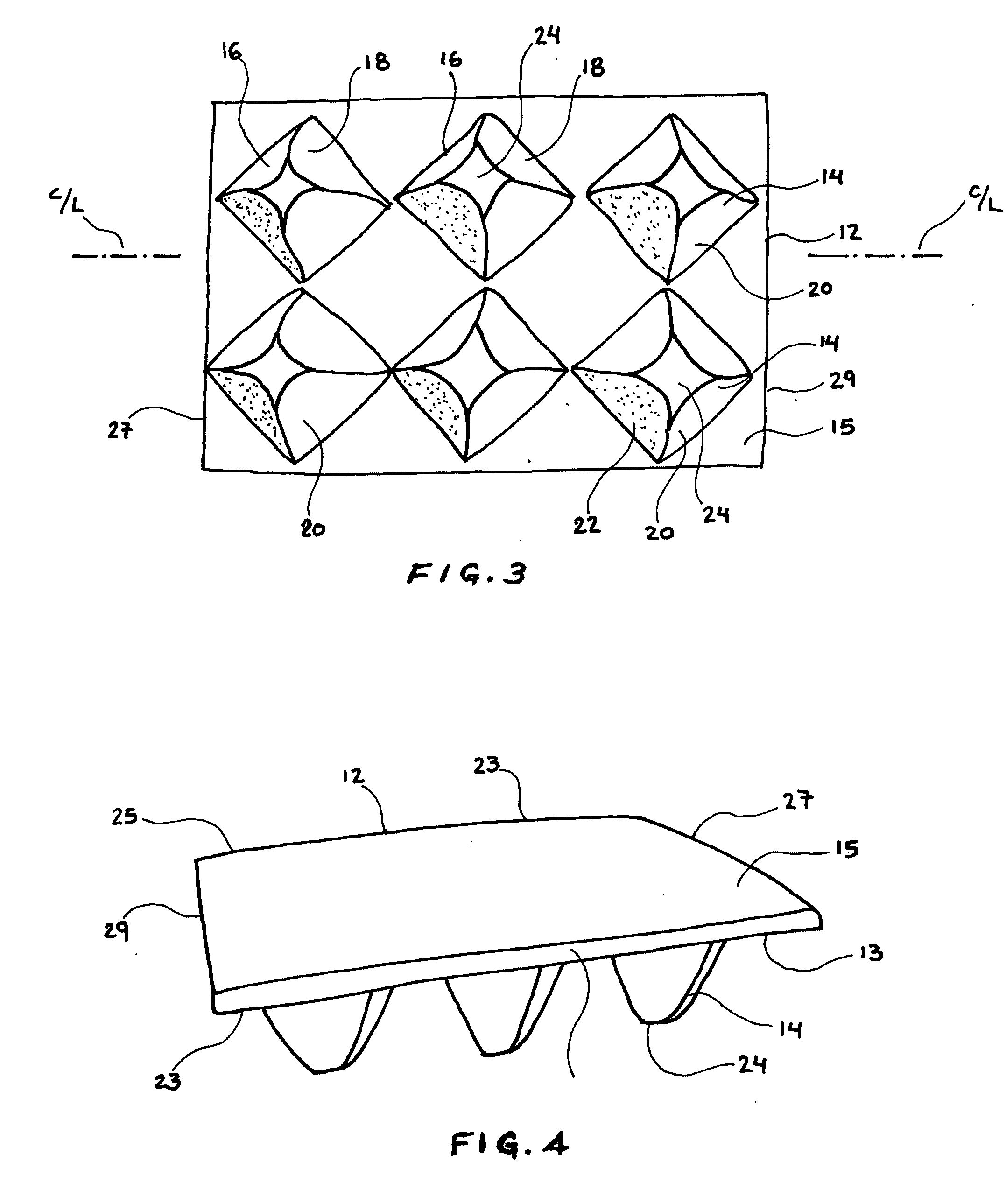Passive back extensor device to treat trigger point - back pain
a back extension and trigger point technology, applied in the field of therapeutic treatment of back pain, can solve the problems of affecting the patient's recovery, causing pain in the back, so as to reduce back pain, reduce pain, and reduce pain
- Summary
- Abstract
- Description
- Claims
- Application Information
AI Technical Summary
Benefits of technology
Problems solved by technology
Method used
Image
Examples
Embodiment Construction
[0038] Referring now to the drawings and first to FIG. 1, a passive back extensor device constructed according to the principles of the present invention is shown generally at 10. The passive back extensor device is provided for application of controlled mechanical pressure to trigger points that may exist in the paraspinal muscles that are situated along both sides of the spinal column of a patient's back and particularly in the region of the lower lumbar spine, where back pain is typically described as “low back pain”. The passive back extensor device 10 is preferably of integral construction, being composed entirely of soft rubber or any of a number of relatively soft and flexible rubber-like polymer materials. It should be borne in mind however, that the passive back extensor device 10 may be constituted as an assembly of a number of different materials if desired.
[0039] The passive back extensor device has a generally rectangular and generally flat base substrate 12 which is p...
PUM
 Login to View More
Login to View More Abstract
Description
Claims
Application Information
 Login to View More
Login to View More - R&D
- Intellectual Property
- Life Sciences
- Materials
- Tech Scout
- Unparalleled Data Quality
- Higher Quality Content
- 60% Fewer Hallucinations
Browse by: Latest US Patents, China's latest patents, Technical Efficacy Thesaurus, Application Domain, Technology Topic, Popular Technical Reports.
© 2025 PatSnap. All rights reserved.Legal|Privacy policy|Modern Slavery Act Transparency Statement|Sitemap|About US| Contact US: help@patsnap.com



